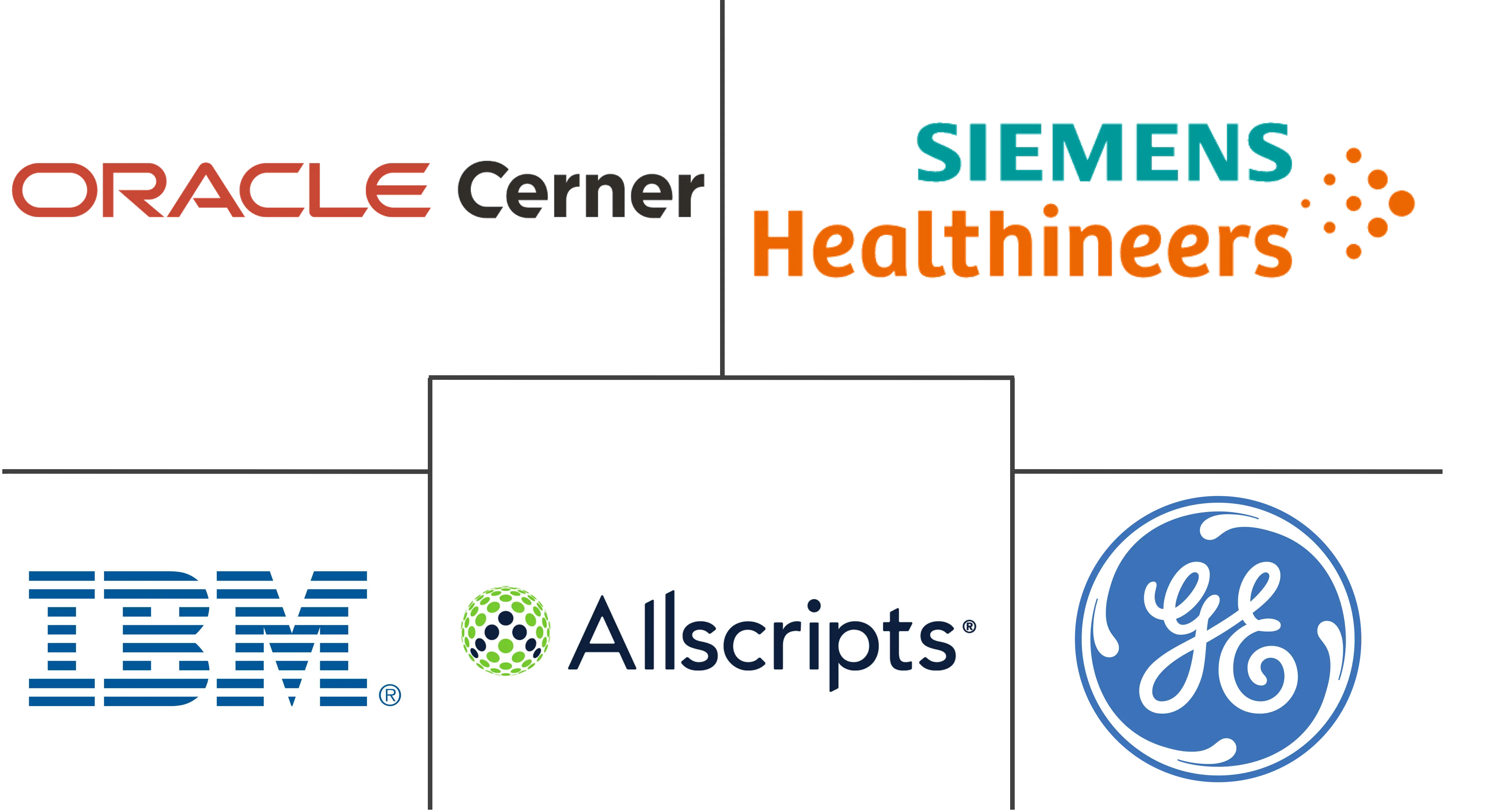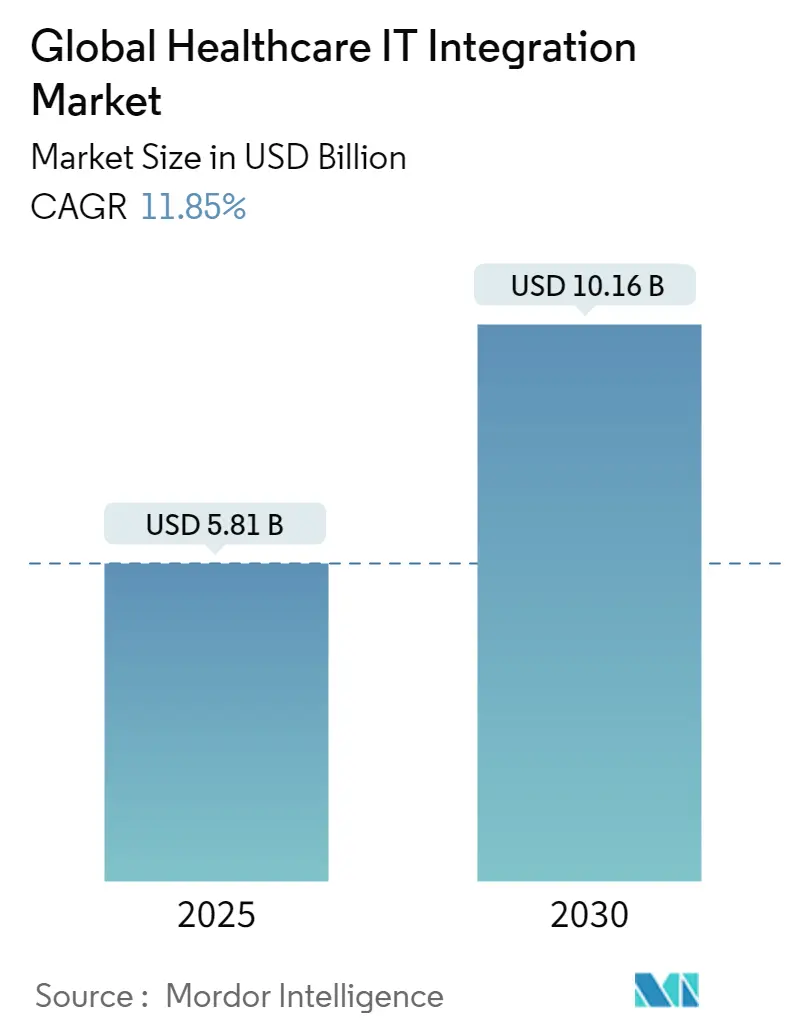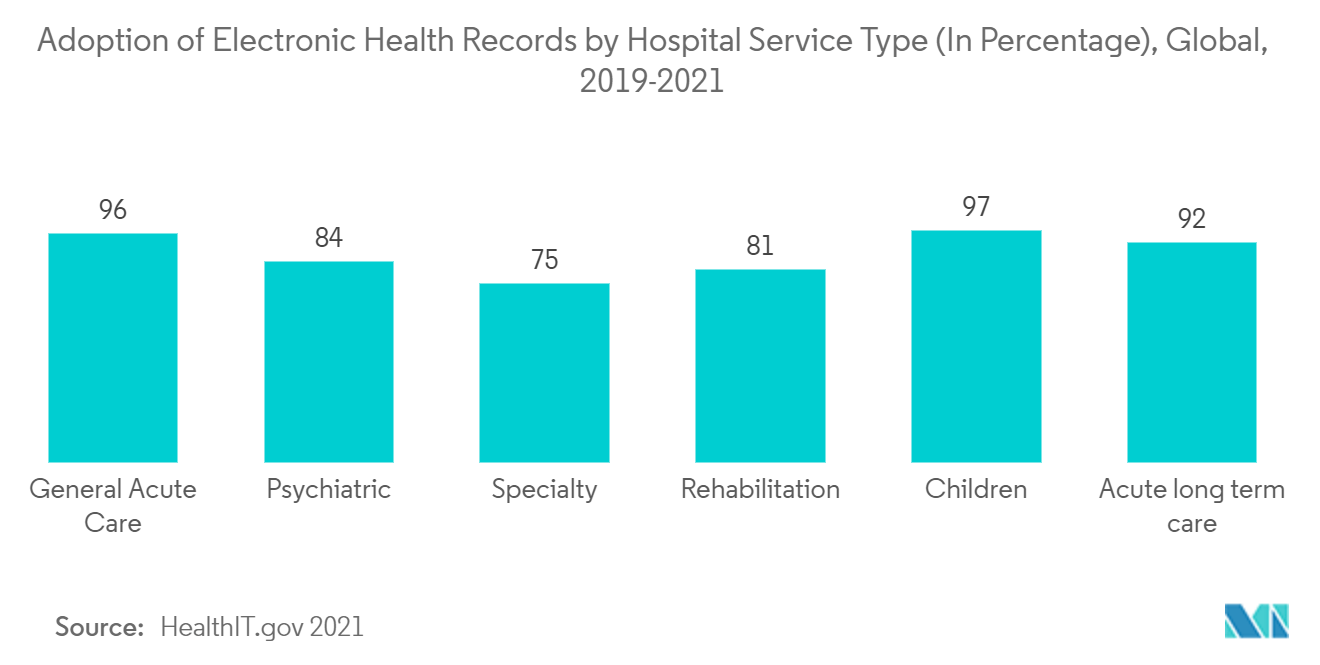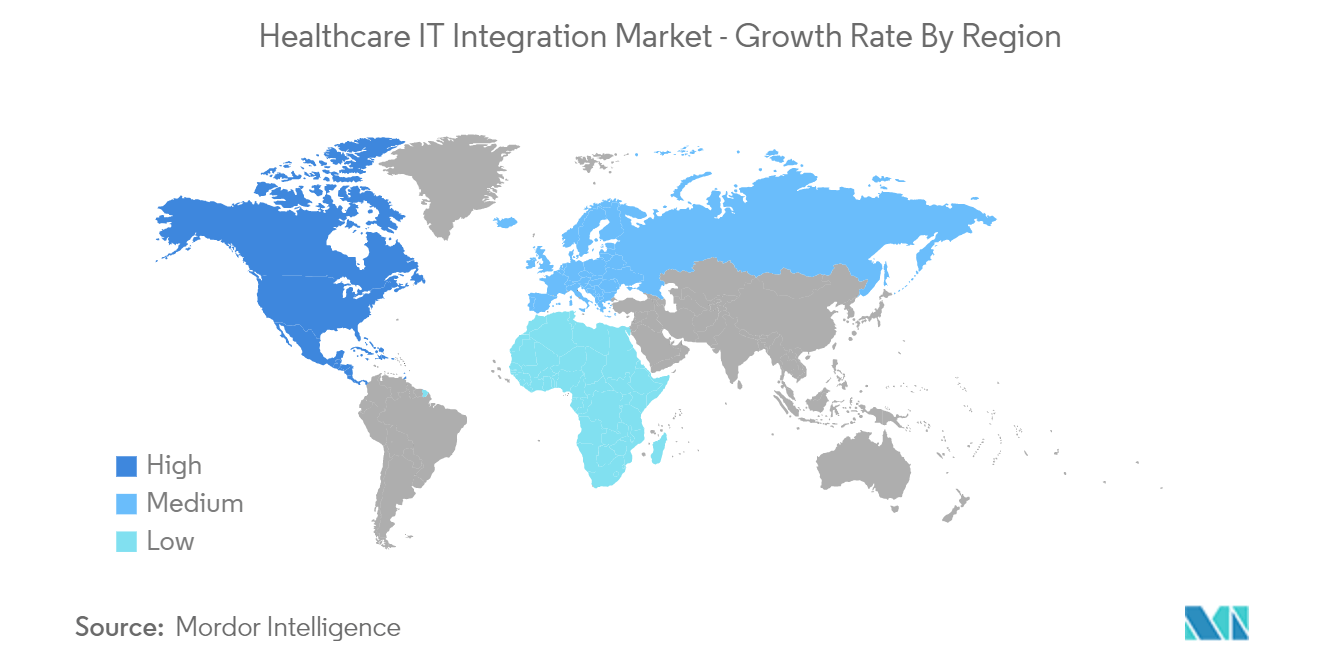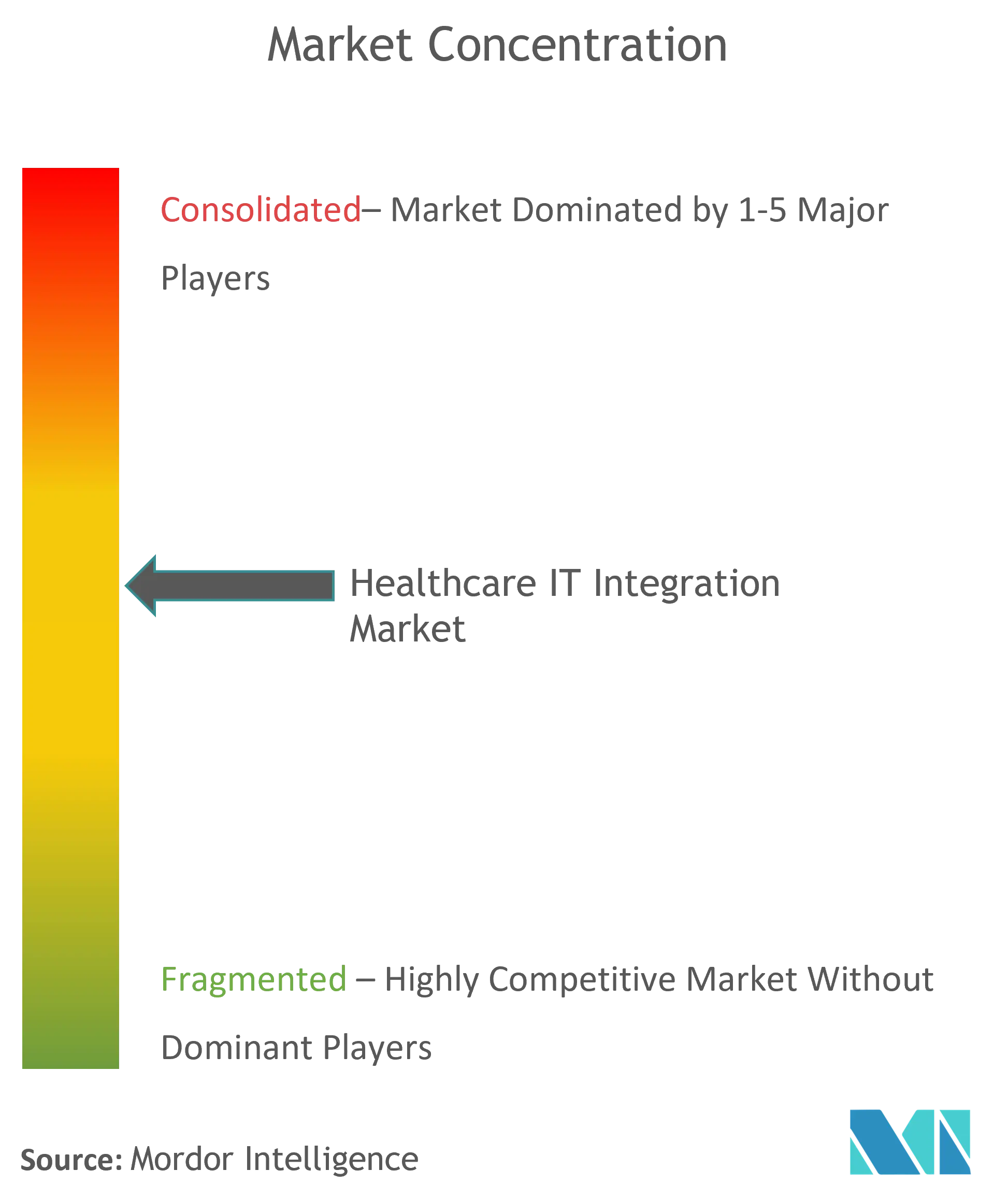Healthcare IT Integration Market Analysis
The Global Healthcare IT Integration Market size is estimated at USD 5.81 billion in 2025, and is expected to reach USD 10.16 billion by 2030, at a CAGR of 11.85% during the forecast period (2025-2030).
All medical clinics were under stress as a result of the COVID-19 outbreak, and medical facilities all around the world were overflowing from the daily visits of numerous patients. In various nations around the world, the rising incidence of coronavirus disease has increased the demand for precise diagnosis and treatment tools. COVID-19 pandemic has also raised the requirement for the social distance between doctors and patients, which has pushed the usage of remote patient monitoring and telehealth solutions. During the pandemic, many companies launched new platforms and services to fight against the diseases. For instance, in March 2020, Health Gorilla, a leader in clinical data interoperability, announced that COVID-19 test ordering was available through its platform. Any healthcare provider who uses Health Gorilla's web application, a Health Gorilla-partnered developer, or a Health Gorilla-integrated EMR can place COVID-19 test orders and receive test results from LabCorp and Quest. Thus owing to the factors mentioned above COVID-19 had a significant impact on the healthcare IT integration market.
The market is being driven by factors, such as increased adoption of electronic health records and other healthcare IT solutions, demand for telehealth services, and remote patient monitoring solutions. Additionally, one of the primary developments in artificial intelligence (AI) in healthcare is the use of machine learning to analyze enormous amounts of patient data and other information. The patient data is either stored in a software database or electronic medical/health records.
The report from Selecthub in 2021, showed that electronic health record/ electronic medical record (EHR/EMR) utilization rates were 89% in 2021. The same report stated that the healthcare sector was about to undergo significant transformation as a result of technologies like artificial intelligence (AI), blockchain, clinical decision support (CDS), and the presence of tech behemoths like Epic and Cerner. The future of electronic medical records was already being impacted by the quick advancements in technology. AI and virtual assistants like Alexa and Siri are likely to show up in the health IT industries as they become more widely available and potent.
The healthcare IT integration market is therefore anticipated to grow over the forecast period based on the aforementioned aspects. However, the lack of skilled professionals in the healthcare IT field restrains the market growth over the forecast period.
Healthcare IT Integration Market Trends
Interface Engine Segment is Expected to Hold the Highest Market Share Over the Forecast Period
The major factors driving the growth of the interface engines segment are the increasing utilization of electronic health records and healthcare IT solutions. Additionally, demand for telehealth services and remote patient monitoring solutions are likely to boost the market growth of the interface engine segment during the forecast period.
An interface engine, also known as an integration engine, is a software program that processes the data between various healthcare IT systems. These integration engines help IT departments tie together disparate systems, allowing the clinicians and other authorized users to access data housed within multiple EHRs or other applications. The role of an interface engine is to ease the workflow by providing flexibility to change direction and send alerts when any abnormal condition arises. Streamlined healthcare workflows and interface engines are a vital combination of support and delivery of the products. Some of the top interface engines found are Cloverleaf, Corepoint, Rhapsody, Datagate, and IGUANA. The presence of competitors and product launches are fueling market growth. For instance, in August 2022, the Indonesian government launched a healthcare data integration platform in Jakarta as a part of the country's health technology transformation. Moreover, in 2021, Qvera launched a new user interface for QIE version 5.0. It was utilized in the healthcare cloud systems.
Government initiatives and research and developments in the field of healthcare IT are also boosting the market growth. For instance, as per the May 2022 update from the National Public Health Observatory (NHPO), Union Health Ministry is preparing a portal that is anticipated to serve as an observatory for all public health program-related data in India. Through the platform, NHPO is anticipated to have an integrated command control centre to monitor the policy implication framework across all states for public health programmes in India.
With the rising significance of the interface engine, it is projected to see a rapid future growth estimated for this segment over the forecast period.
North America Dominates the Market and is Expected to do the Same Over the Forecast Period
The market for healthcare IT integration is dominated by North America, and this dominance is anticipated to last for a few more years. This region is expected to increase its market share in the future, owing to the well-established healthcare industry and better reimbursement facilities in the region.
The United States holds most of the market in the North American region, due to the higher adoption of digital healthcare in the country and the rising investments done by the companies over there. For instance, as per the 2020 update by the United States Department of Veteran Affairs, the Federal Electronic Health Record Modernization (FEHRM) program office announced the Department of Veterans Affairs (VA), Department of Defense (DOD), and Department of Homeland Security's United States Coast Guard (USCG) expanded their joint health information exchange (HIE) network. The joint HIE is a modernized health data sharing capability that enhances the ability of VA, DOD, and USCG to share data bidirectionally electronic health records (EHR) quickly and securely with participating community health care providers.
Besides, company developments and product launches are also boosting the market in the region. For instance, in May 2022, Wisconsin-based Epic Systems announced that they are working to make COVID-19 antiviral treatments easier for patients and providers to locate through its EHR, based on an initiative by the Biden administration to expand COVID-19 treatment access. Moreover, during the 2022 Digital Health 9th Annual Innovation Conference & Expo, GE Healthcare announced its intention to introduce the Edison Digital Health Platform, a vendor-agnostic hosting and data aggregation platform with an integrated artificial intelligence (AI) engine. The platform is being created to make it possible for hospitals and healthcare systems to efficiently implement the clinical, workflow, analytics, and AI tools that would support the enhancement of care delivery and the promotion of high-efficiency operations.
Due to the above-mentioned facts, North America is anticipated to face growth in the healthcare IT integration market over the forecast period.
Healthcare IT Integration Industry Overview
The healthcare IT integration market is highly competitive and consists of several major players. However, with technological advancements and product innovations, mid-size to smaller companies are increasing their market presence by introducing new ingredients at lesser prices. Companies, like Allscripts Healthcare Solutions Inc., Oracle Cerner, General Electric Company (GE Healthcare), Siemens Healthcare GmbH, and IBM Corporation, hold a substantial share in the market.
Healthcare IT Integration Market Leaders
-
Allscripts Healthcare Solutions Inc.
-
Cerner Corporation
-
IBM Corporation
-
Siemens Healthcare GmbH
-
General Electric Company (GE Healthcare)
- *Disclaimer: Major Players sorted in no particular order
Healthcare IT Integration Market News
- In July 2022, Aster DM Healthcare Group's innovation hub, the Aster Innovation and Research Centre, partnered with Intel Corporation and AI platform provider CARPL.ai to develop and launch an AI-powered health data platform in India.
- In May 2022, the San Francisco-based healthcare technology startup Innovaccer and Montana-based nonprofit health system St. Peter's Health are collaborating to integrate the latter's healthcare cloud platform into care locations and enhance care management.
Healthcare IT Integration Industry Segmentation
As per the scope of the report, healthcare IT integration is defined as integrating information technology (IT) with operations in healthcare. The integration of information technology (IT) in healthcare includes a variety of automated methods that are used to manage information about people's health and healthcare, for both individuals and groups of patients. The Healthcare IT Integration Market is Segmented by Product (Interface Engines, Medical Device Integration Setup, Other Products), Mode of Service (Operation Services, Support, and Upkeep Services, Training), End User (Hospitals, Clinics, Labs, Radiology, Other End Users) and Geography (North America, Europe, Asia Pacific, Middle-East and Africa, and South America). The market report also covers the estimated market sizes and trends for 17 countries across major regions globally. The report offers the value (in USD million) for the above segments.
| By Product | Interface Engines | ||
| Medical Device Integration Setup | |||
| Other Products | |||
| By Mode of Service | Operation Services | ||
| Support and Upkeep Services | |||
| Training | |||
| By End User | Hospitals | ||
| Clinics | |||
| Labs | |||
| Radiology | |||
| Other End Users | |||
| Geography | North America | United States | |
| Canada | |||
| Mexico | |||
| Europe | Germany | ||
| United Kingdom | |||
| France | |||
| Italy | |||
| Spain | |||
| Rest of Europe | |||
| Asia-Pacific | China | ||
| Japan | |||
| India | |||
| Australia | |||
| South Korea | |||
| Rest of Asia-Pacific | |||
| Middle East and Africa | GCC | ||
| South Africa | |||
| Rest of Middle East and Africa | |||
| South America | Brazil | ||
| Argentina | |||
| Rest of South America | |||
Healthcare IT Integration Market Research FAQs
How big is the Global Healthcare IT Integration Market?
The Global Healthcare IT Integration Market size is expected to reach USD 5.81 billion in 2025 and grow at a CAGR of 11.85% to reach USD 10.16 billion by 2030.
What is the current Global Healthcare IT Integration Market size?
In 2025, the Global Healthcare IT Integration Market size is expected to reach USD 5.81 billion.
Who are the key players in Global Healthcare IT Integration Market?
Allscripts Healthcare Solutions Inc., Cerner Corporation, IBM Corporation, Siemens Healthcare GmbH and General Electric Company (GE Healthcare) are the major companies operating in the Global Healthcare IT Integration Market.
Which is the fastest growing region in Global Healthcare IT Integration Market?
Asia Pacific is estimated to grow at the highest CAGR over the forecast period (2025-2030).
Which region has the biggest share in Global Healthcare IT Integration Market?
In 2025, the North America accounts for the largest market share in Global Healthcare IT Integration Market.
What years does this Global Healthcare IT Integration Market cover, and what was the market size in 2024?
In 2024, the Global Healthcare IT Integration Market size was estimated at USD 5.12 billion. The report covers the Global Healthcare IT Integration Market historical market size for years: 2019, 2020, 2021, 2022, 2023 and 2024. The report also forecasts the Global Healthcare IT Integration Market size for years: 2025, 2026, 2027, 2028, 2029 and 2030.
Our Best Selling Reports
Healthcare IT Integration Industry Report
Statistics for the 2025 Global Healthcare IT Integration market share, size and revenue growth rate, created by Mordor Intelligence™ Industry Reports. Global Healthcare IT Integration analysis includes a market forecast outlook for 2025 to 2030 and historical overview. Get a sample of this industry analysis as a free report PDF download.

